The summer of 2024 was dominated by Chappell Roan’s newest album The Rise and Fall of a Midwest Princess and single “Good Luck, Babe!” Roan, well known for her personal style and powerful stage presence, works with her stylist Genesis Webb to create outfits that pull from pop culture, drag, and fashion history. Roan and Webb favor 90s and early 2000s fashion, but pull from many other trends in history from 18th century court gowns to 1920s evening wear.
“LET’S DO PENELOPE”
Arguably one of Roan’s most recognizable looks, this outfit was featured on the album cover for her single “Good Luck, Babe!” The silhouette is striking, with a horned headpiece reminiscent of ones from the early to mid 15th century. There are a lot of examples of similar headpieces (sometimes called hennin) in paintings throughout the century. The outfit also features a prosthetic pig nose inspired by Penelope (2006). Beyond just aesthetics, the movie has an overarching theme of self-acceptance that is similar to the lyrics of “Good Luck, Babe!”.


The dress itself is inspired by 1990s to early 2000s fashion, especially Galliano and Mugler. Both 90s and early 2000’s fashion included elements of grunge, bright colors, and bright patterns. The silhouette of Roan’s dress is similar to slip dresses popular in the 90s and 2000s, with reflective red fabric and authentic boots from 2003 to match.


YOUR FAVORITE WRESTLER’S FAVORITE WRESTLER
While performing at Lollapalooza 2024 in Chicago, a city known for wrestling, Roan wore an outfit inspired by lucha libre wrestlers (luchadores). Lucha libre (translated literally as “free fight”) is a type of professional wrestling that originated in Mexico in the early 20th century, but is recorded in various forms as early as 1863. The visibility of the sport rose in the 1950s as television broadcasting became more popular.

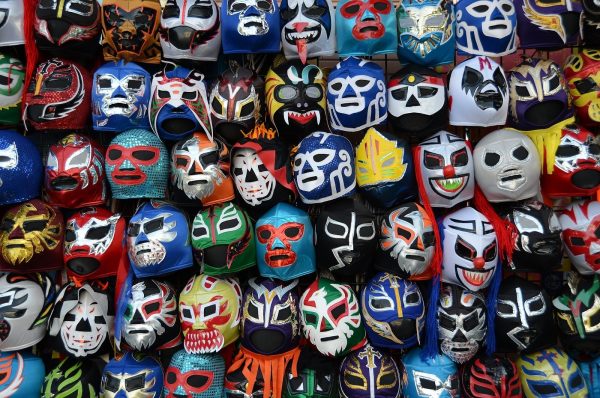

The use of the mask in lucha libre wrestling was popularized by El Santo in the 1940s. El Santo would wear his mask even when he wasn’t wrestling, and would eventually be buried wearing it. The mask itself has significance in the sport, as it represents both a character and the wrestler’s honor. Wrestlers might have to take their mask off if they lose, and if a fighter’s mask is entirely removed during a game, their opponent could be disqualified.
Let them Eat Cake

Roan has worn at least two 18th century inspired outfits, the first of which she wore on The Late Show with Stephen Colbert. This outfit’s focal point is two pocket panniers and a stunning vintage corset. Webb states that Roan’s corset is an actual antique and “probably from 1910”. Corsets and corset-adjacent garments were worn for centuries, but this corset does look convincingly like it could be from the 19th/early 20th century, although it is heavily altered so it’s hard to tell for sure.
As for the panniers, this style is called pocket panniers or pocket hoops, and would be worn by women for a good chunk of the 18th century (1740s to 1780s) to give their gowns the fashionable silhouette at the time. It’s hard to find extant panniers because of how often they would be worn—and, consequently, how little they would be preserved.
However, here are a few rare pocket and regular panniers from throughout the 1700s.

Roan wore a second 18th inspired outfit to Lollapalooza 2024 on August 1st. This one looks to be inspired from a mid-18th century robe à la française, which were popular in different forms from 1720-1780.
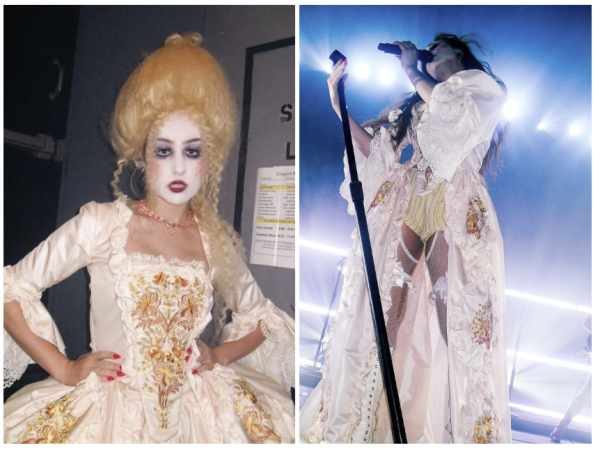
This kind of gown had a triangle-shaped stomacher on the front to close the dress, an overskirt parted down the front, and distinctive pleats starting at the shoulders and falling down the back of the dress. The robe à la française evolved from the sack-back dress earlier in the century, and would be worn by both middle and upper class women. To distinguish between classes, upper class ladies would have their dresses made with expensive fabrics like silk and decorated with lots of embroidery.
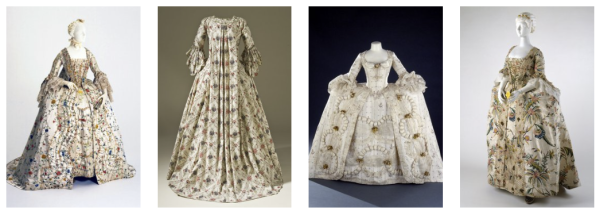
Several different robe à la française dresses from the Philadelphia Museum of Art, LACMA, Toronto: Royal Ontario Museum, and The Met respectively
In the pictures above, you can see the difference in the silhouettes of the dresses from the 1760s and 1740s respectively. The 1750s dress has a much rounder, bell-shaped skirt, while the dress from the 1740s has a more rectangular silhouette. The rectangular silhouette would not disappear for the rest of the century, and can be seen again in the 1770-80s and in court dress throughout the 18th century. Not all of this kind of dress would be white, I just found ones in those colors for the sake of comparing them to Roan’s outfit.
DRESSED TO THE NINES—OR THE EIGHTIES
Webb states that Roan’s Tiny Desk Concert outfit was a modern take on an 80s prom dress. Both Roan and Webb are fans of Betsey Johnson, a designer who rose to popularity in the 60s through the 90s, and whose clothes are still sold today. In fact, the exact dress can still be found for sale on second-hand websites like Poshmark and eBay. The look itself incorporates popular trends from the 80s, such as bold colors and an overall attitude of “bigger is better!”. Roan’s look is complete with a large wig, drag-inspired makeup, and cigarettes in her hair.


80’s fashion itself also incorporates trends from the 40’s, which can be seen in this dress with its fitted, sleeveless bodice (something that was new to the 40’s and very different from the dresses of the 20’s and 30’s) and sweetheart neckline.

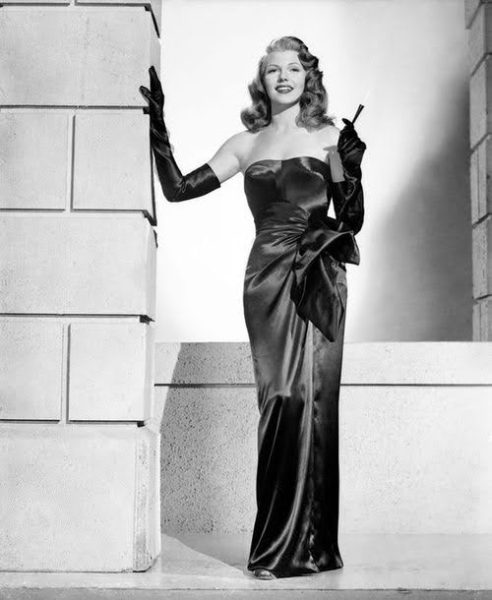

SWAN LAKE

While performing and being interviewed on The Tonight Show, Roan wore matching black and white swan outfits, a la Tchaikovsky’s Swan Lake ballet. Feathers, of course, have been used throughout history in jewelry to hats to decoration on dresses, but these two outfits are reminiscent of 1920s theater costumes and late 90’s to early 2000s haute couture.
Roan’s “black swan” outfit incorporated some trends we see being popularized in the 20s, such as a handkerchief (ruffled or draped) hemline and a slim, boyish silhouette for the dress.
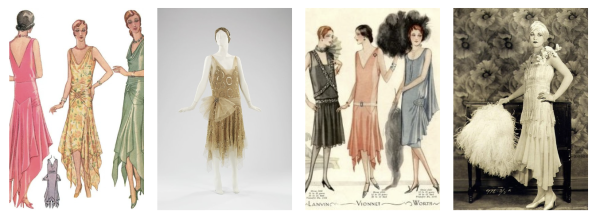
The white swan look pulls from more traditional ballet silhouettes with its tutu and sweetheart neckline. The headpiece is reminiscent of the same one worn on the cover of “Good Luck, Babe!”.
A few pieces from 90’s runway fashion in the same stylistic vein as the two swan outfits.
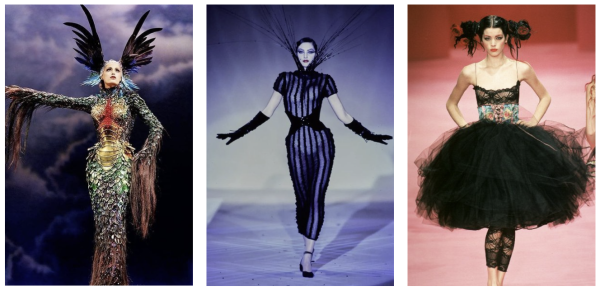
In conclusion, Roan’s outfits are inspired from many different time periods and historical fashion trends such as medieval hennin and 18th century robe à la française gowns. By blending both modern and historical fashion, Roan and Webb have created a recognizable and unique style for Roan that has already proven itself to be well-known and influential in pop culture.
